
The India Communities we foster
Dotted across the myriad regions of Northern and Western India, there is a common thread that binds all our artisan communities — a generations-long love affair with handmade craft and a somber appreciation for the prosperity that their work can bring. It’s this marriage of pragmatism and enthusiasm that drives every one of the artisans who work with us, that has driven them to bring their handiwork to the world stage.
No more is Agra marble cutting an obscure means of shaping accessories, nor is Ferozabad glassblowing an unknown art. The subtle lines of the Saharanpur school of carving, and the curved legs of Jaipuri woodworking that they’re often paired with, are mainstays in Artisan Furniture’s catalogue of sustainably sourced, communally made products. And perhaps not entirely unassociated, they’re increasingly found in virtual and brick & mortar shopfronts across the globe
We’re proud to have played a tiny part in the ever-growing network of artisanal hamlets that are making their generational crafts the heart of their communities once again. For decades small town North India has stagnated; cut off from industry and forced to send their young sons and daughters into the big cities to try and eke out a living for their community. But no more. The return of the traditional crafts, with the aid of the internet and technology to make people aware of their splendor, has been nothing short of a mini revolution right here in these communities.
We’ve done our bit. Think of a blooming wave of little red dots on a map emanating from the central hub of Jaipur, Rajasthan—the state capital, and a bastion of the grassroots craftwork that has been a fixture of the desert state for centuries. Interconnected lines among these dots represent the trade routes that connect them, simultaneously reducing their dependence on the industrial centers and creating a web of sustainable, rural crafting hamlets that are reliant on nothing but their own skillsets.
The Technology
Traditional crafting techniques don’t have to be the antithesis of a modern supply chain. Lots of leatherworkers still use a type of tool handmade from bone; not because it’s simply how they’ve always done it, but because it’s the best tool for their job. Plastic tends to break easily, while metal damages the hide. Bone maintains its form for decades and gets better with age. And yet they’re part of the modern supply chain for leatherworking across the globe — the only difference being that they’re handmade.
In a similar vein, the centuries old crafting techniques in northern India have changed little since some artisan had a bright idea circa 1600. It can be rather difficult to improve on technique that have been effective for such a long time — but they can be made more efficient without compromising the spirit of their craft.
This is what Artisan Furniture does; giving these skilled artisans the technology that they can use to bring their craft to the next level. This includes bits like spray booths to replace the rickety spraying nozzles that were once used for painting furniture, electric grinders that are operated by hand and hence act as extensions of the artisans’ skilled hands, not modifications, and even sharper woodcutting implements that are identical in shape to the traditional methods, only much, much sharper.
But that’s not all, technology does not only encompass the physical world, not anymore. Artisan Furniture’s brand — with all the social media marketing, online stock management and backend logistics that it involves — is heavily reliant on online means to keep stock flowing smoothly and sustainably. It’s surprisingly difficult to know what artisan-made products will sell well in a market that’s 4000 miles from home, and even more so when you’ve never left your little part of the world. That’s where Artisan Furniture comes in— to do the logistical heavy lifting and let the artisans do their thing.
Long gone are the days that local artisans had no clue about what lay across the desert sands. They now both have the knowledge and the backing to ensure their products can be cherished across the world, to places where they’d never heard of until the miracle that is mobile data swept across India. It’s a spectacular marriage of technology and community, with the artisans at its very heart.
The Artisans
Craftsmen, artists, handicraft workers. Whatever term one prefers, artisans are the beating heart of the company that bears their name, and of the communities whose revival they’ve spearheaded. Northern India’s incredible crafting tradition, spanning the rise and fall of entire dynasties, each contributing a colorful layer to the soil of the region’s handicraft, has had one thing in common. The artisan — the person whose craft, to them, is something mundane, something that they’re simply meant to do. But to their hamlets, towns, and regions it is dually a point of local artistic pride and a means to better their station and bring the fruits of prosperity to a region that has been dusted over with economic stagnation for far too long.
Artisans in Rajasthan and the regions that surround it have never used wielded their pen to show the world what they can do, no shiny marketing pamphlets, no marketing and certainly no social media presence. So here, we’re doing the same and showing you myriad snapshots of the artisans’ life and work — the tools they use, the chai they savor and the company they keep. An insight into the story behind the people who make your products may be rather helpful.
The Hamlets
Northern India has always had a strongly local culture of craft. Every little hamlet, village and town was, and indeed is, known for a specific type of craftwork that has been undertaken there for centuries. The work done can be obscure, so much so that a google search often reveals vague articles and poorly maintained website pages from a decade ago.
Word of mouth reigns supreme in these parts. If you’re connected with the furniture industry, you’ll come to hear that Udaipur, popularly known as the city of lakes in Rajasthan is the best town for a particular type of bone inlay, and that Moradabad as a crafting hub has grown in influence rapidly. This local differentiation is a hallmark of northern Indian handicraft; there’s no single town that can claim to contain all the expertise needed to create a product by hand.
Often, this crafting specialization changes as often as accents in the British Isles. The city of Agra —famous for the Taj Mahal— is fittingly a hub for marble carving, while its sister city of Firozabad is well known for glassblowing. The towns are separated by a mere 30 miles, but are infinitely apart in the type of handiwork that they specialize in. Indeed, the difference can be almost comically clear — there’s a particular roadside restaurant (a “Dhaba”) in the Agra-Firozabad motorway that has a glassblowing studio and a marble statuette showroom on either side!
Such dividing lines are all too common in the plains of Northern India, but just as often do the crafting difference seamlessly meld together. The varied sands of the western and wastern Thar Desert in Rajasthan flow into each other with little fanfare as do the artistic traditions of the little hamlets that have grown in vicinity of each other for so long.
The State of Uttar Pradesh
Firozabad- Glass
The sister city of Agra, Firozabad has long been a fiercely independent centre of handicraft — glassblowing to be exact. It’s steeped in the city’s longstanding Muslim community, a relic of the time when Muslim immigrants into India brought the skill of shaping glass with them and shaped their local community in the process.
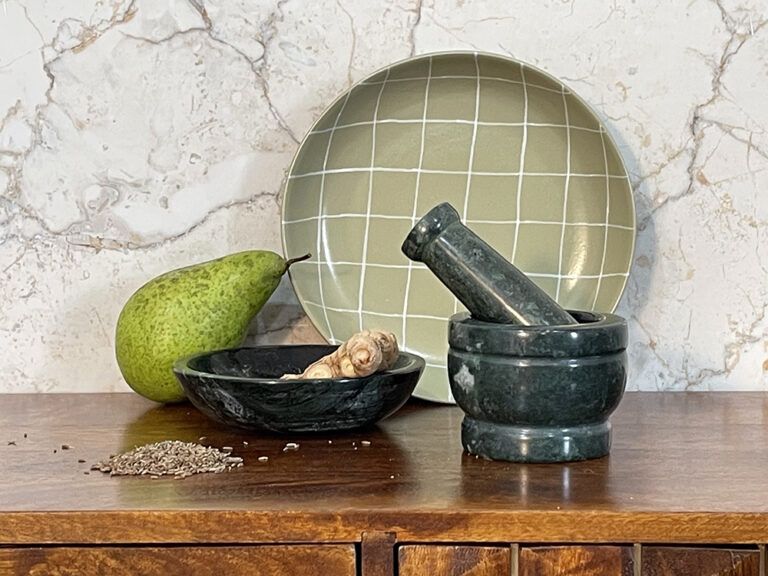
Agra – Marble
Agra may be famous for the marvel that is the Taj Mahal, but it is the city’s long traditions of marble cutting that made Shah Jahan’s incredible monument a reality. In local folk tales, the marble-workers of Agra are descendants of the very people who made the Taj Mahal — and had their arms chopped off so that they could never make anything so beautiful ever again. That may be true, there’s no modern Taj of course, but the sheer variety of marble designs on show in this city will have you question that notion.
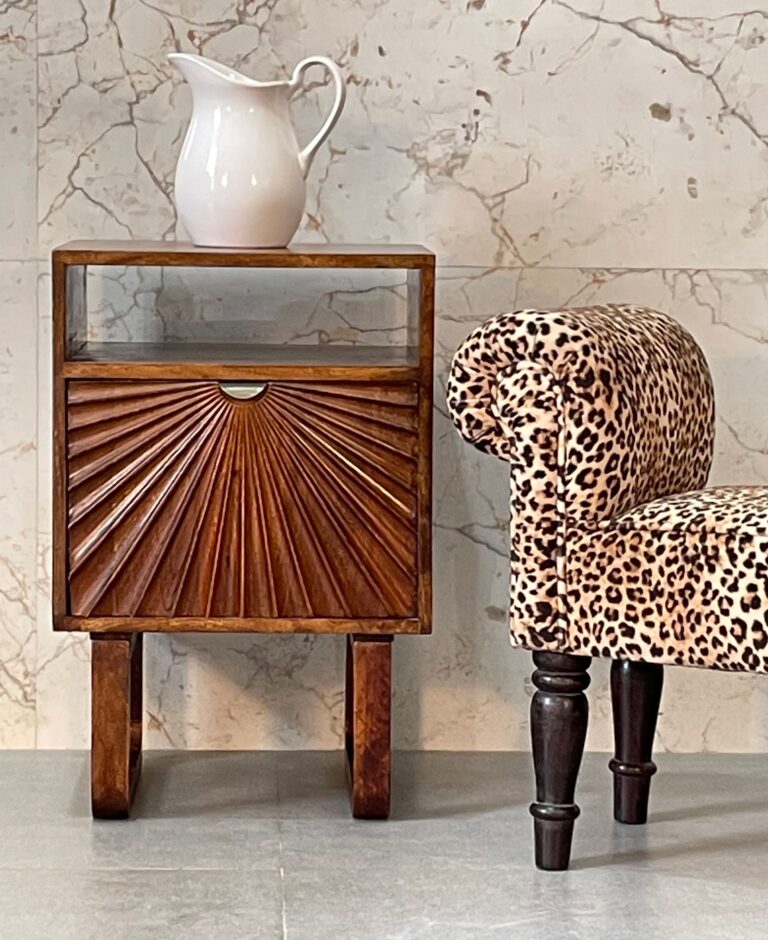
Aligarh – Furniture Fittings
Ah Aligarh, the city of accessories and the charming Mughal-era buildings that host them. Brass, iron and aluminum are all as much a part of the industrial landscape as the town’s very cultural fabric. It’s a very different type of crafting centre as the small-town charm of Khurja, or the all-encompassing spirit of Sahranpur. This is a city borne out of the the industry within its borders — the smokestacks that dot the horizon and the little workshops that are in every available nook and cranny are as much part of India’s local crafting landscape as the traditional handicrafts of the region.

Khurja – Ceramic
Perhaps unadventurously called the Ceramic City, the moniker nevertheless stands true for this hamlet in the northern state of Uttar Pradesh. If the plethora of chimneys around the city huffing smoke in the skies wasn’t clue enough, the rows of roadside pottery vendors lining the street would prove to any onlooker how seriously this town takes their craft. There’s little of agricultural note near Khurja; no gently waving fields of wheat, no stray ears of corn on the motorway. Their ceramic pottery is what, quite literally, put them on the map and you know it as soon as you stepped within its crowded borders.
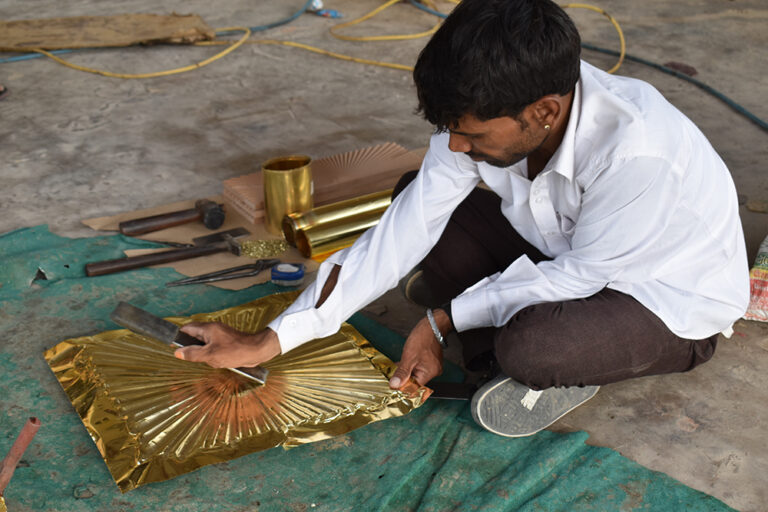
Moradabad – Brass
Possibly the most quintessentially Uttar Pradesh town in the region, Moradabad is a constant hubbub of activity from dawn to dusk, when the whole place shuts down as quickly as it started. The scent of metalworking hangs in the air for much longer, as do the discarded pieces of brass that can be found on sidewalks until the next morning’s cleaning crew come into town. But for all that, there’s a silver lining to it all — or indeed a brass one. This is a town intently drawn together through its shared, generational craft. A craft that dominates its day and pervades its night but has made it one of the fastest growing industrial towns in northern India.
Saharanpur – Woodware
The little town in the densely populated interior of north India is an unlikely hub of carving and woodwork. Once immensely important to the Mughals as a transport hub, Saharanpur’s real cultural significance lay in its carving. Conveniently, the railway links created a melting pot in the true sense of the world — artisans from across north India converging to bring elements of their local carving schools to this tiny hamlet. Like everything the Mughals did in their long reign, the town of Sahranpur became an amalgamation of cultures, techniques and arts that shaped their vast empire, and continues to be so today.
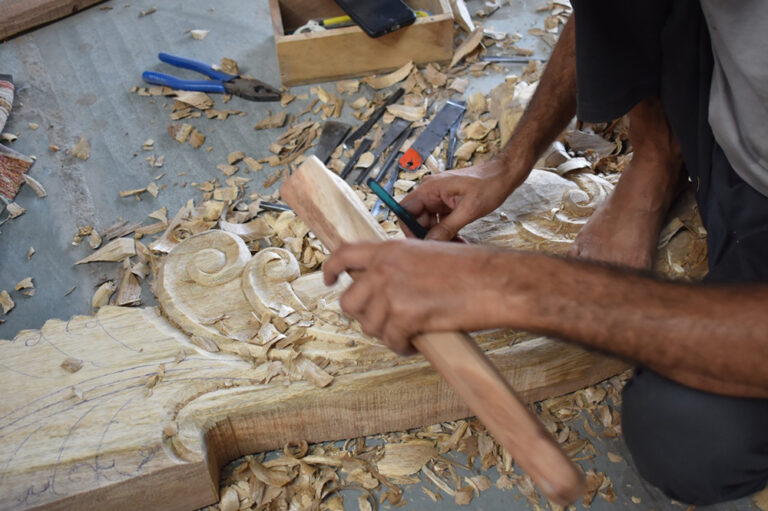
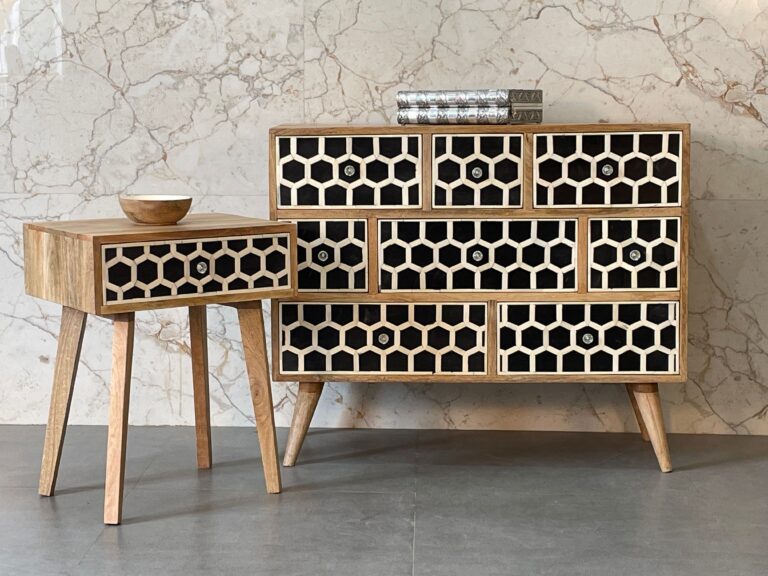
Sambhal – Bone Inlay
If Uttar Pradesh were a jungle (which it is, in a way, just an urban one) with the many towns its animal inhabitants, Sambhal would be the strangest beast of all. Unlike many of the crafting towns in the region, this one reached its heyday centuries ago under Mughal rule. The past use of ‘heyday’ implies a decline, and while that may be true, Sambal’s slow fall brought a new industry to its rescue — bone inlay. The art of carving bone is a rare one, mostly due to the connotations involved, but when an entire community has little else to rely upon, they tend to become rather proficient at it. And for that we’ll be eternally grateful.
The Royal State of Rajasthan:
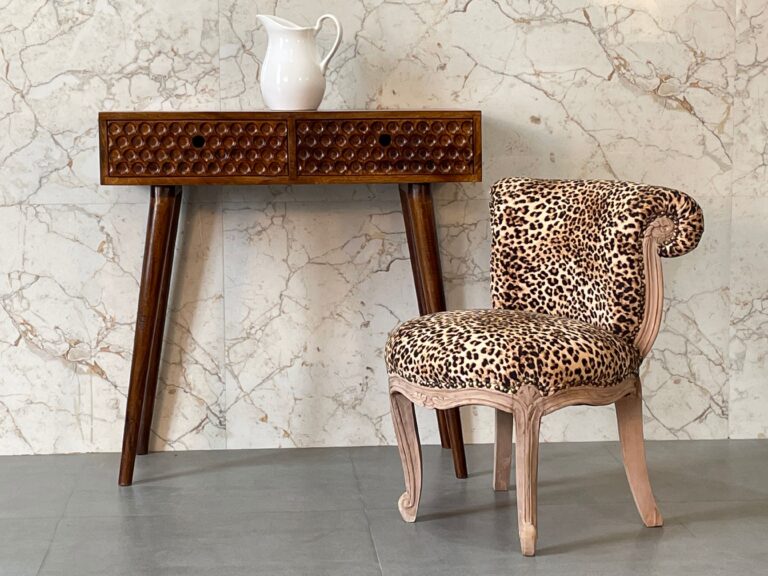
Jodhpur – Reclaimed Timber
The Royal State’s second city, Jodhpur has long been a city that placed valued the idea of rebirth — both the spiritual kind, and the practical. A city carved out from the desert sands doesn’t have the blessing of abundant resources, and it copes in different ways. Jodhpur’s myriad temples dotted around the land, and the workshops for reclaimed timber often in the same street are a testament to that. There’s a lot of fallen trees to go around in this part of the world; you can be assured that the local artisan community has done very well with them for quite some time.

Jaipur – Furniture
Where it all started. The Pink City is the beating heart of the region’s thriving crafting landscape, and where the arteries of local artistic traditions flow into. Mirroring this ancient arrangement, Jaipur hosts the main Artisan Furniture unit that collects myriad products from across northern India and then ships them out to locations worldwide
Jhunjhunu – Furniture
This brilliantly named hamlet in Rajasthan doesn’t have the air of a typical crafting hamlet; the telltale whiff of lacquer in the air, the roaring noise of a grinder, and most of all, the artisans shuffling around for a chai break in the early evenings. That is because Jhunjhunu was, and is, town bathed in the spirit of the Indian military — the army base still dominates the landscape, and stories of the town’s bravery in the nation’s many military conquests can be overheard in the market stalls. But happily, this military spirit has not stifled the town’s ancient crafting tradition, indeed it has done much to encourage a spartan, resilient school of furniture-making that forms the base of the state’s cottage industry.
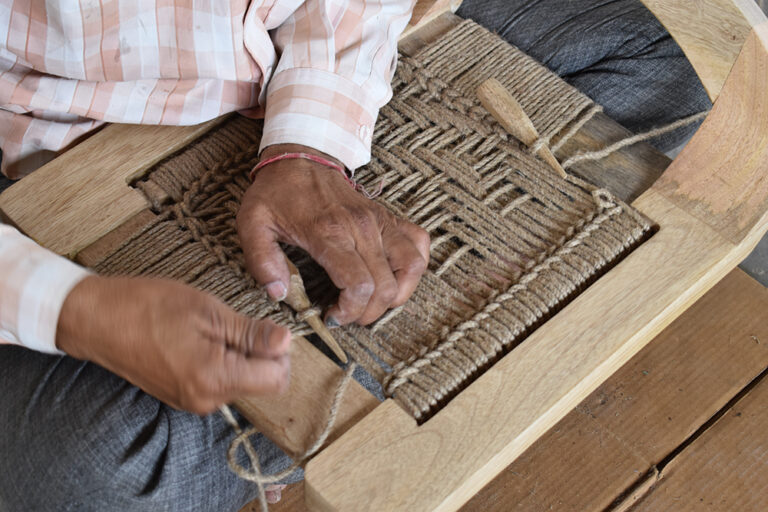
Churu – Furniture
The town at the edge of the desert, Churu has been a city of extremes since it came to be four centuries ago. The frescoed havelis and the bizarre life-size statues of saints tell the tale of a place that is unlike many of the villages that eke out a living from the sands of the Thar. Here thrives a local granite industry, the evidence of which can be seen in the Rajasthani architecture — the once bustling havelis that are bastions of the Churu style of granite carving. The bustle here is now in the town’s many workshops and carving huts, all grinding away in a technique that has been passed down from artisan to artisan and made Churu the jewel of the Thar’s scattered crown.
The State of Haryana
Panipat – Cotton / Jute
Well known for the two great Battles of Panipat that altered the course of Indian history, Panipat has now undertaken the role of the cotton and jute centre of northern India. The fertile, monsoon-fed plains surrounding Panipat lend themselves very well indeed to the artisanal fabric industry that has been present there for centuries.
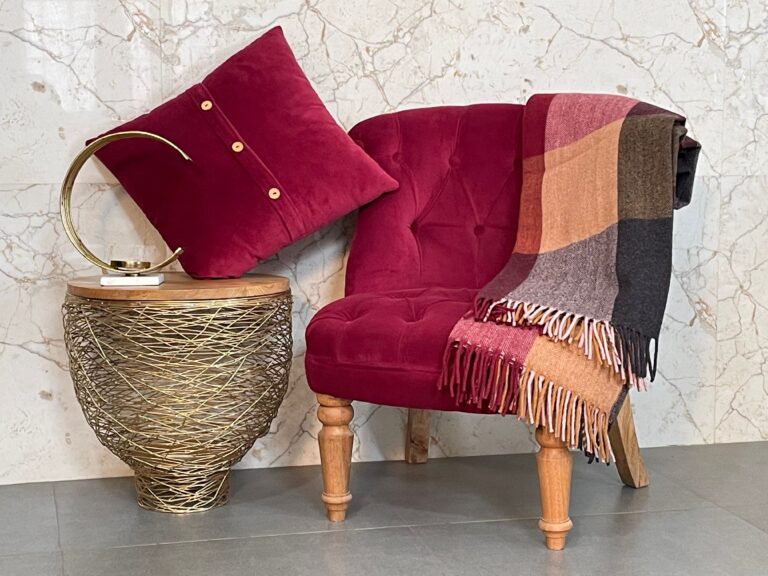
The State of Punjab

Amritsar – Linen / Velvet
A city of sharp contrasts — as well known for the ostentatious splendor of the Golden Temple as the Jallianawalah Bagh Massacre that carved its name in blood across the national consciousness. The contrast is evident in the art of weaving that underpins all of Amritsar’s economic history. Amritsar fabrics, especially velvet, are traded across India’s colder regions, yet the city itself basks in the tropical heat for much of the year. Whatever one makes of this peculiarity, there’s one thing that has remained true for decades — the Amritsar weave is unrivalled in this part of the world.

Roorkee – Nautical
Nestled in the foothills of the Himalayas, Roorkee has long been a town that valued resilient, precise craftsmanship. Flanked by the snow-covered mountains on one side and dense forests on the other, stuff built here really had to last. And it does — Roorkee is a town known for its rugged timepieces and nautical instruments. The last bastion of industry before the towns of pilgrimage that come beyond it, perhaps devotees-to-be paid this little town a visit to ensure their onward journey remained as peaceful as the temples they wished to visit.

